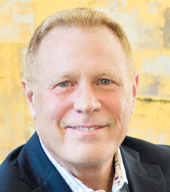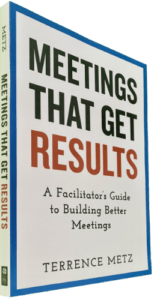Here are some sequentially listed A3 project questions, modified from an A3 project approach.
These questions serve as a litmus test for determining the overall health of a project. After the questions, you will find an A3 Project Facilitation Reference Guide.
Borrow or modify the A3 project questions to develop richer insight into the health of your project.
A3 Project Questions
“To what extent” should precede the following questions:
- Can you clearly and succinctly define the “presenting problem”—the actual business issue that is being felt?
- Have you engaged other people?
- Might you show the gap between the target and the current condition?
- Did you clarify the optimal business objectives?
- Could you isolate the root cause(s) of the main components of the gap?
- Have you engaged other people?
- Will you uncover the substantive (i.e., most meaningful) information to support the analysis?
- Have you identified the real problem?
- Have you gathered and verified facts-not just data and anecdotes-to clearly understand the current state?
“HOW will you” should precede the following questions:
- Decide to tackle this problem.
- Capture and share the learning?
- Decide which countermeasures to propose.
- Get agreement from everyone concerned?
- Know if your countermeasures work?
The “WHAT” should precede the following questions:
- Are some possible countermeasures?
- Are the root causes of the problem?
- Do you actually know and how do you know it?
- Follow-up issues can you anticipate?
- Is the business context?
- Is the problem or issue?
- Might be the problem?
- Is your implementation plan—who, what, when, where, and how?
- Problems may occur during implementation.
The “WHO” should precede the following questions:
- Is responsible for this issue?
- Owns the problem?
- Owns the process for addressing the problem (or realizing the opportunity or managing the project)?
This Facilitation Reference Guide supports an A3 project workshop. It begins with management perspective and clarity around what needs to be delivered to be called a success. Some call this, “knowing what DONE looks like.”

Facilitation Reference Guide for an A3 Project Workshop
Facilitation Reference Guide — Preparation Phase
- First and foremost, articulate and codify the deliverables.
- Next, understand the organizational holarchy and the impact of failure. Hence, the value of the initiative, project, or meeting should be stipulated by the amount of money and wasted FTE at risk if the project fails.
- Listen and then listen more. Therefore, speak with the project team, the business community, the sponsors, and the customers to ensure clarity and alignment. Come to understand the political risks and potential personality issues associated with an IT project workshop.
- Conduct a quantitative, MGRUSH risk assessment. Remember, if you cannot measure it, you cannot manage it.
- When considering multiple IT project workshops or multiple days, build an IT project workshop plan for the series of meetings required.
- Emphasize roles and the equality of all meeting participants. Have them leave their titles in the hallway before entering the meeting room. Assign the role of observer to people you cannot keep out.
- Build your approach (i.e., agenda) for each session based on discrete deliverables.
Facilitation Reference Guide — Workshop Phase
Hence, as you prepare for your meetings and workshops:
- Take the basic approach for each session identified above and expand into the detailed questions you need answers to and the activities you will lead to getting results.
- Create an annotated agenda including review material, ground rules, and appropriate audio-visual support.
- Default to the two primary activities when necessary:
- Brainstorming:
- List (ideate, diverge, create undiscussed input)
- Analyze (e.g., if prioritizing, what tool, what questions, etc.)
- Document (converge, decide, agree on final output)
- Process Sequence
- Build consensus around the purpose of the process.
- Clarify each supporting activity (preferably in verb-noun format).
- Clarify information (input) needed to support each activity.
- Detail the transaction including supporting calculations or algorithms.
- Describe the environmental conditions and policy impact.
- Confirm what changes and fully define the new outputs.
- Brainstorming:
Facilitation Reference Guide — Review and Resolution Phase
Finally, provide a smooth segue from the meeting deliverable to use by the project team:
- Distribute clear and valid documentation from the meeting.
- Follow up personally with the project team to de-brief the findings.
- Obtain any calibration of meeting notes from meeting participants.
- Submit an evaluation report of the meeting or workshop effort, including benefits and concerns from your own performance as the session leader.
Follow this structured reference guide and you are ensured a higher likelihood of preventing any significant omissions. Additionally, prepare thoroughly and allow twice as much time as possible. As a meeting leader, you need to keep all your participants fully engaged. Thorough preparation requires planning your activities, scripting your questions, and creating backup plans. You will be responsible for keeping participants clear about what you need from each of them; therefore, do the following:
- Hereafter, always provide participants with a written meeting purpose, scope, objectives, and Basic Agenda.
- Stipulate broad expectations and detailed questions that your subject matter experts need to properly prepare for the session.
Which Path? The Art of Questioning
For longer than the recorded history of humans, hikers and mountaineers have turned around, faced their group or partner, and asked, “Which way?” and as soon as someone says, “To the left,” someone else asks, “Why?”
As a mountain climber, your decision or choice is a function of countless variables, including duration, distance, and elevation. Later in the journey, you will discover the best path is also influenced by sun orientation and wind direction. Because the decision about which path to take becomes a function of those primary variables, you will also realize that those variables are not equally valued.
As an example, for one person or group, ambient comfort (with their purpose being “experience”) represents the highest importance, so sun exposure and wind chill are critical. Another group stresses elevation and distance (their purpose is “conditioning”). Both rationales are optimal for their respective groups. A neutral facilitator, armed with the appropriate tools, could help them both decide and agree on a path. However, business decisions are usually far more complex than that.
A Guide on the Side, Not a Sage on the Stage
Once you have confirmed that you accurately heard and understood what participants believe, use questions rather than edicts to advance the conversation. Use either prepared or impromptu questions that will:
• Build group cohesion
• Create receptiveness to change and development
• Direct teams to look for similarities—for example, apples and oranges are both fruit and similar in shape, size, and weight; they both bruise easily and rot as well
• Help maintain focus within the scope
• Increase learning and innovative thinking
Questions are most effective when presented with an inquiring, probing, and neutral perspective. Finally, effective questions are open-ended discoveries and not opinions disguised as questions.
______
Don’t ruin your career by hosting bad meetings. Sign up for a workshop or send this to someone who should. MGRUSH workshops focus on meeting design and practice. Each person practices tools, methods, and activities every day during the week. Therefore, while some call this immersion, we call it the road to building high-value facilitation skills.
Our workshops also provide a superb way to earn up to 40 SEUs from the Scrum Alliance, 40 CDUs from IIBA, 40 Continuous Learning Points (CLPs) based on Federal Acquisition Certification Continuous Professional Learning Requirements using Training and Education activities, 40 Professional Development Units (PDUs) from SAVE International, as well as 4.0 CEUs for other professions. (See workshop and Reference Manual descriptions for details.)
Want a free 10-minute break timer? Sign up for our once-monthly newsletter HERE and receive a timer along with four other of our favorite facilitation tools, free.

Terrence Metz, president of MG RUSH Facilitation Training, was just 22-years-old and working as a Sales Engineer at Honeywell when he recognized a widespread problem—most meetings were ineffective and poorly led, wasting both time and company resources. However, he also observed meetings that worked. What set them apart? A well-prepared leader who structured the session to ensure participants contributed meaningfully and achieved clear outcomes.
Throughout his career, Metz, who earned an MBA from Kellogg (Northwestern University) experienced and also trained in various facilitation techniques. In 2004, he purchased MG RUSH where he shifted his focus toward improving established meeting designs and building a curriculum that would teach others how to lead, facilitate, and structure meetings that drive results. His expertise in training world-class facilitators led to the 2020 publication of Meetings That Get Results: A Guide to Building Better Meetings, a comprehensive resource on effectively building consensus.
Grounded in the principle that “nobody is smarter than everybody,” the book details the why, what, and how of building consensus when making decisions, planning, and solving problems. Along with a Participant’s Guide and supplemental workshops, it supports learning from foundational awareness to professional certification.
Metz’s first book, Change or Die: A Business Process Improvement Manual, tackled the challenges of process optimization. His upcoming book, Catalyst: Facilitating Innovation, focuses on meetings and workshops that don’t simply end when time runs out but conclude with actionable next steps and clear assignments—ensuring progress beyond discussions and ideas.




Thank you. Look forward to challenges or additions from others.
Great open ended questions. The dicsussion generated will be full of content.